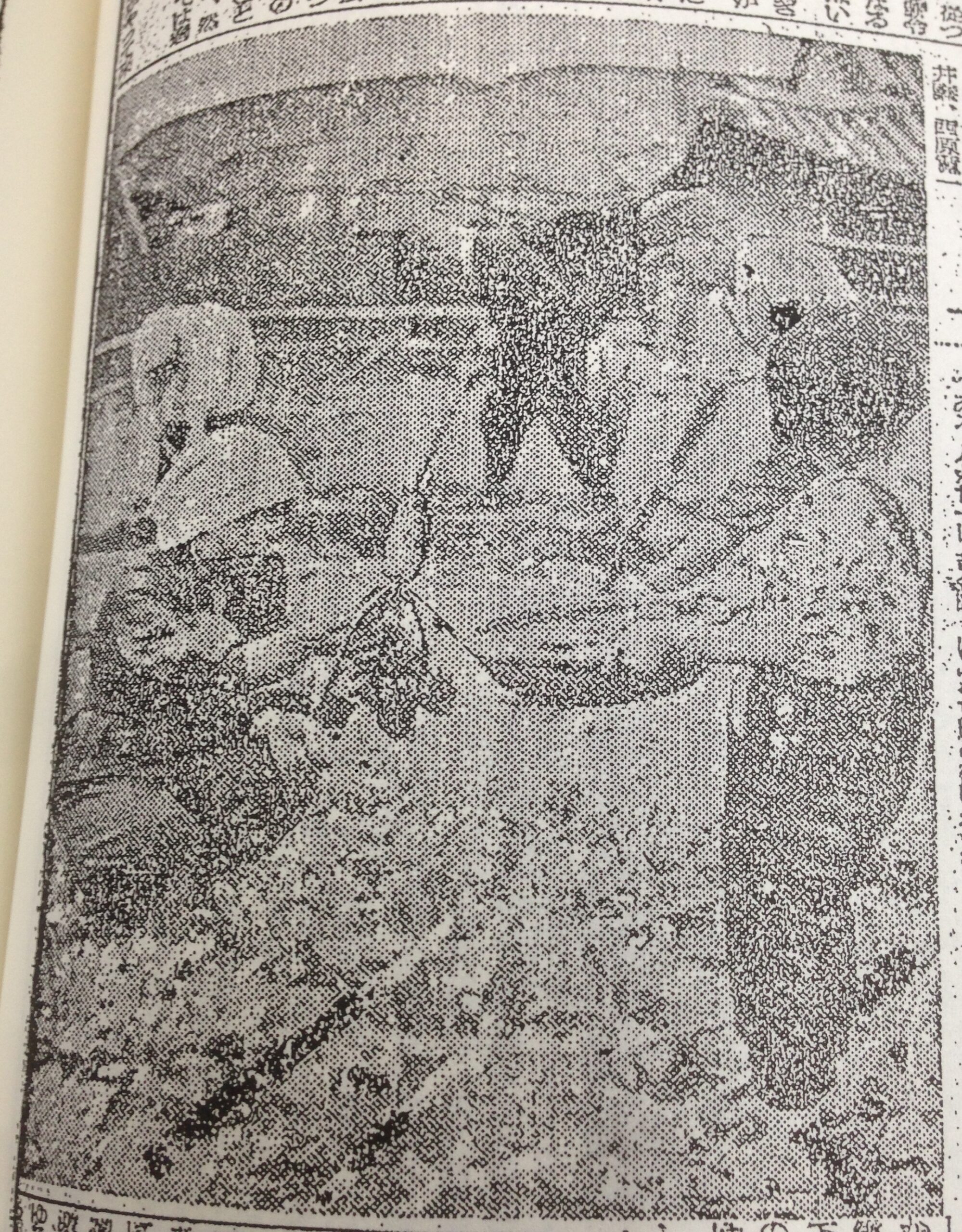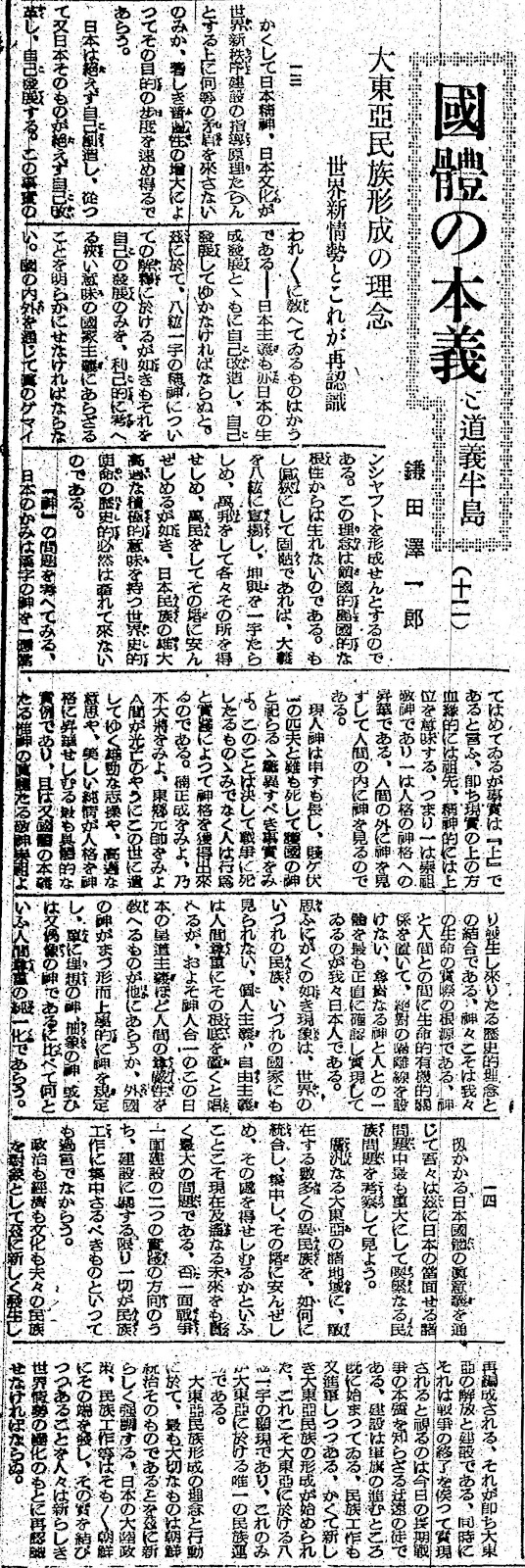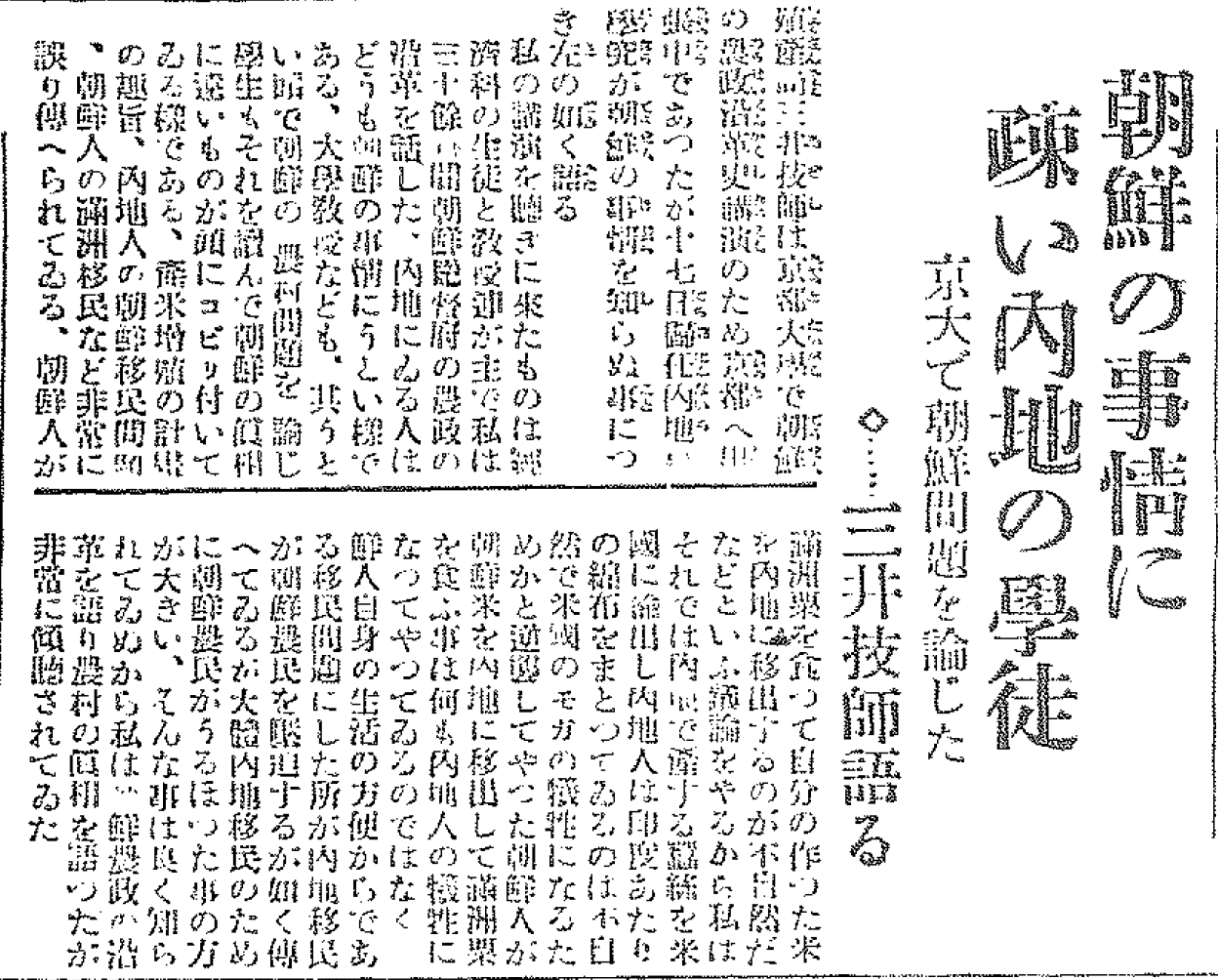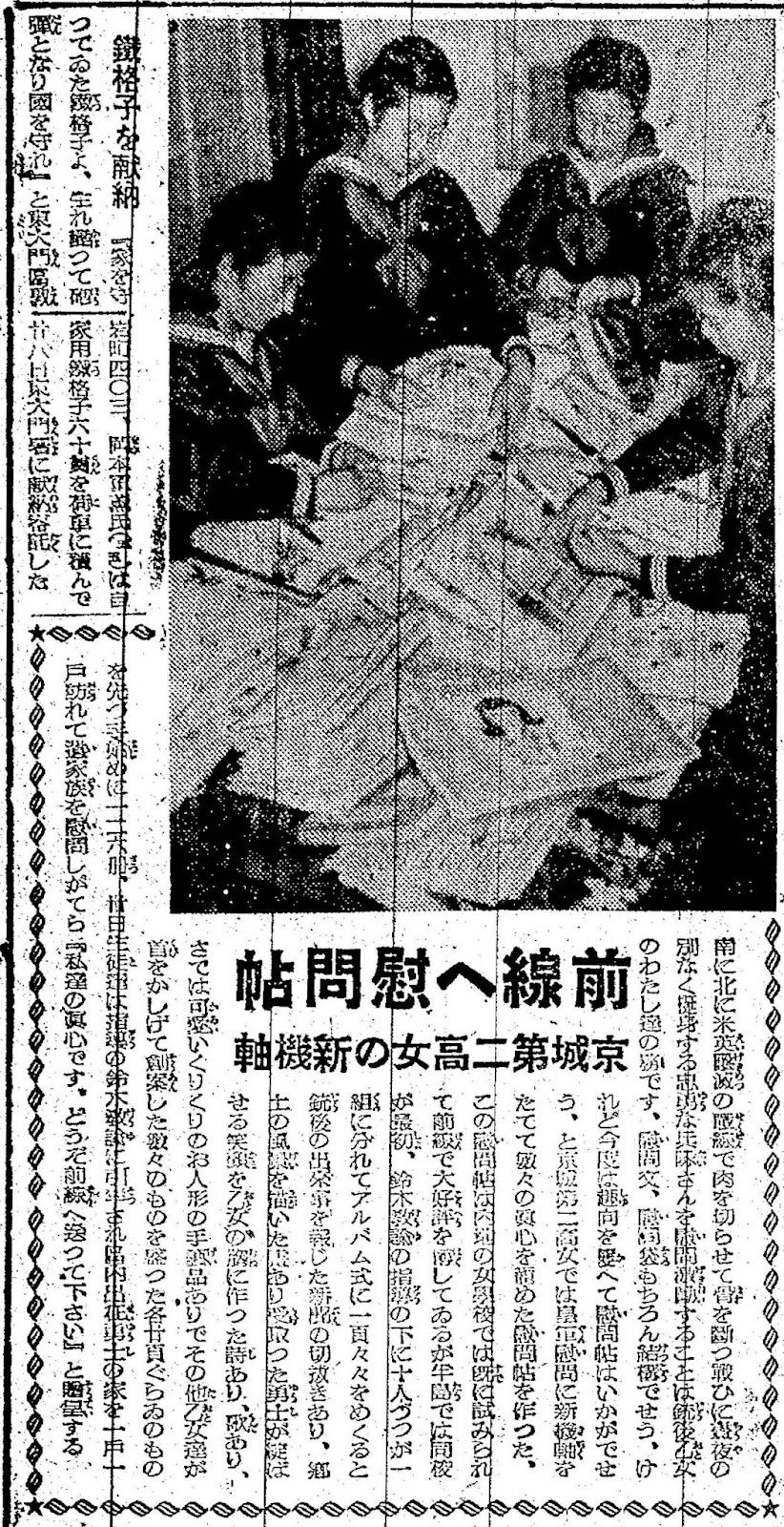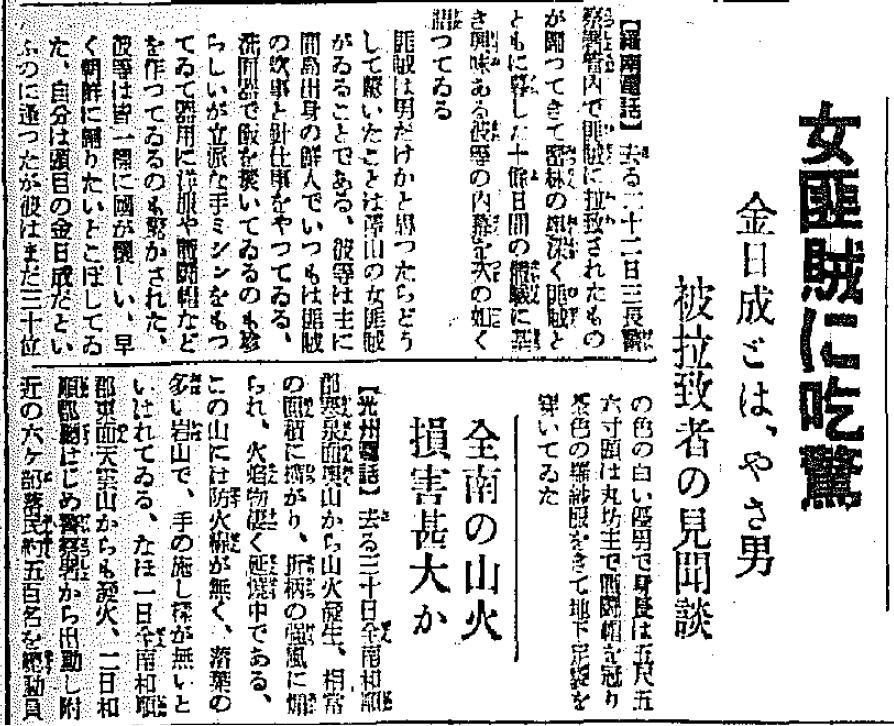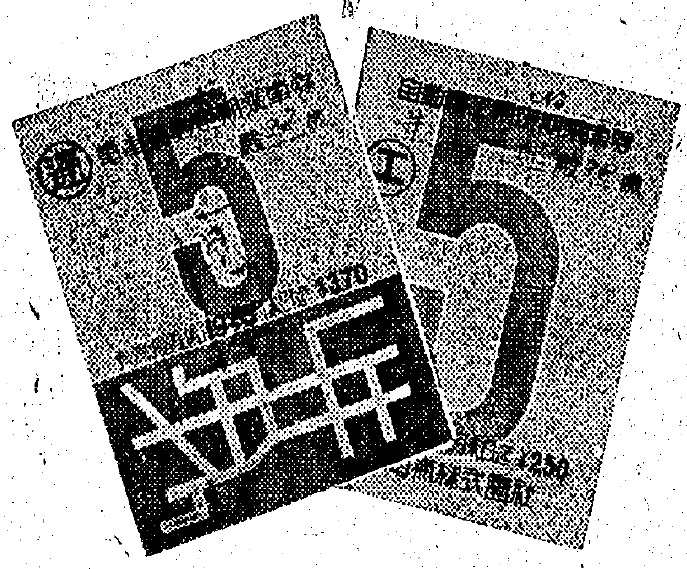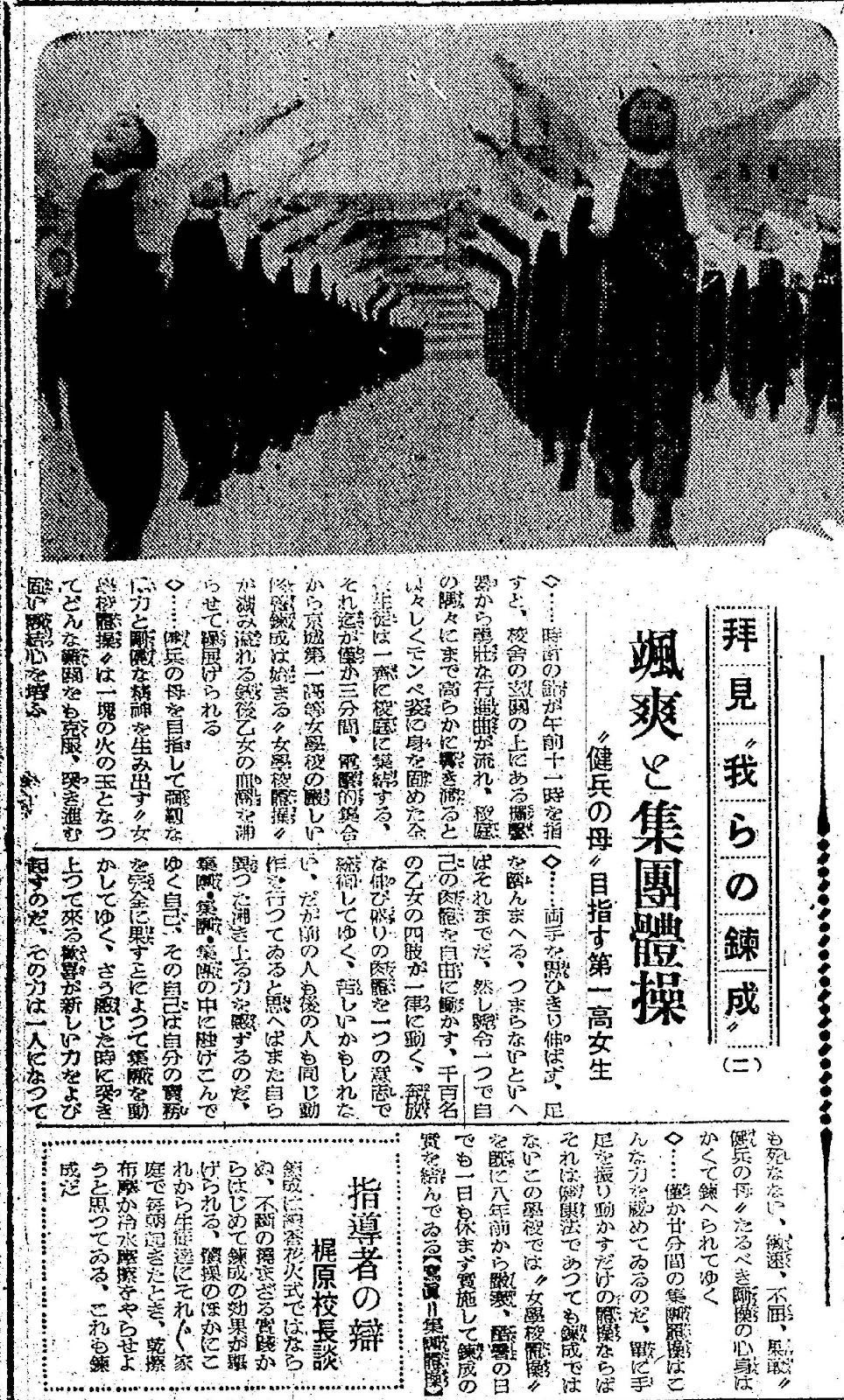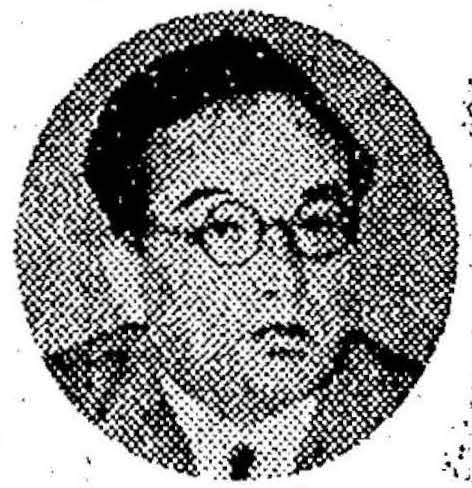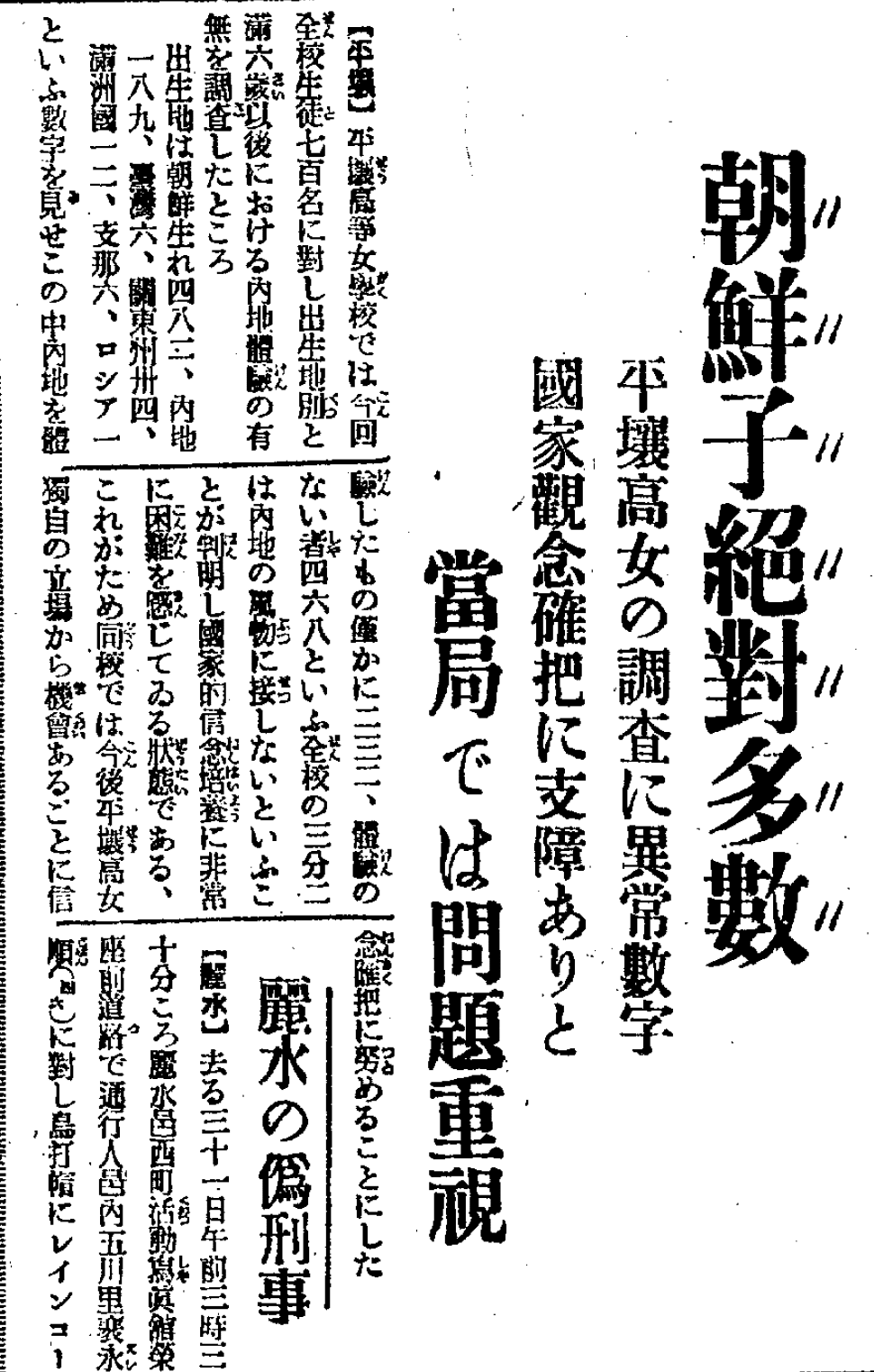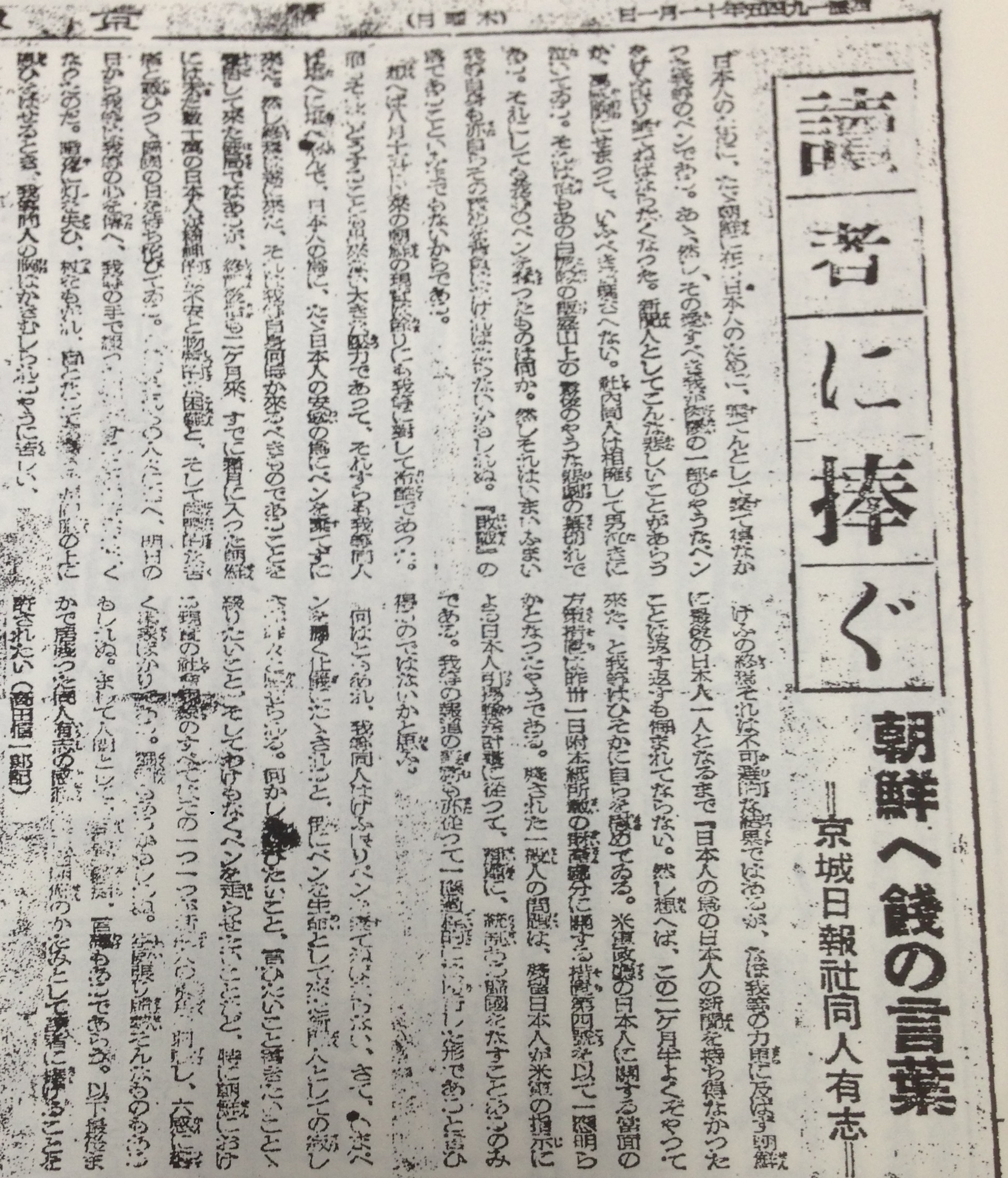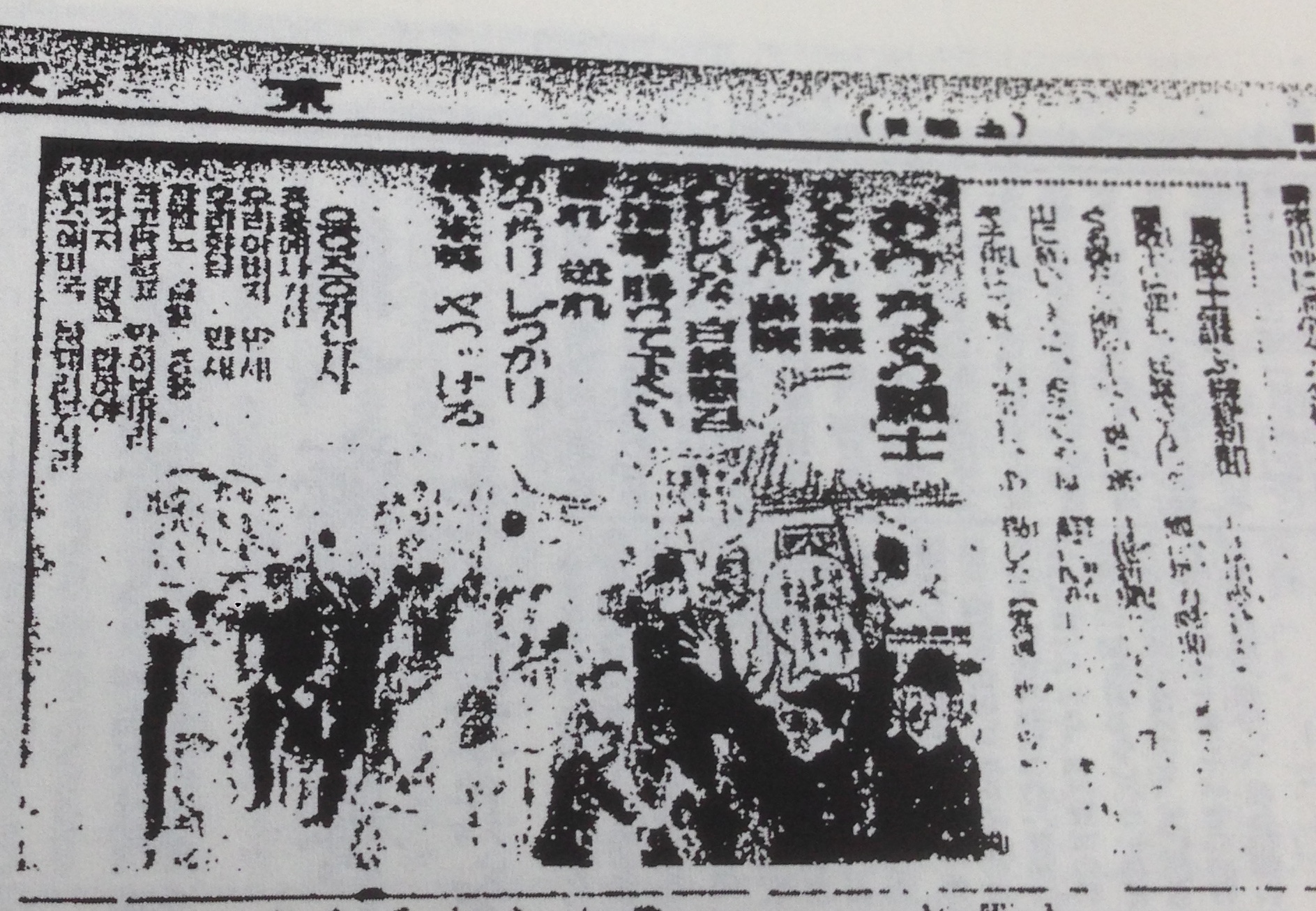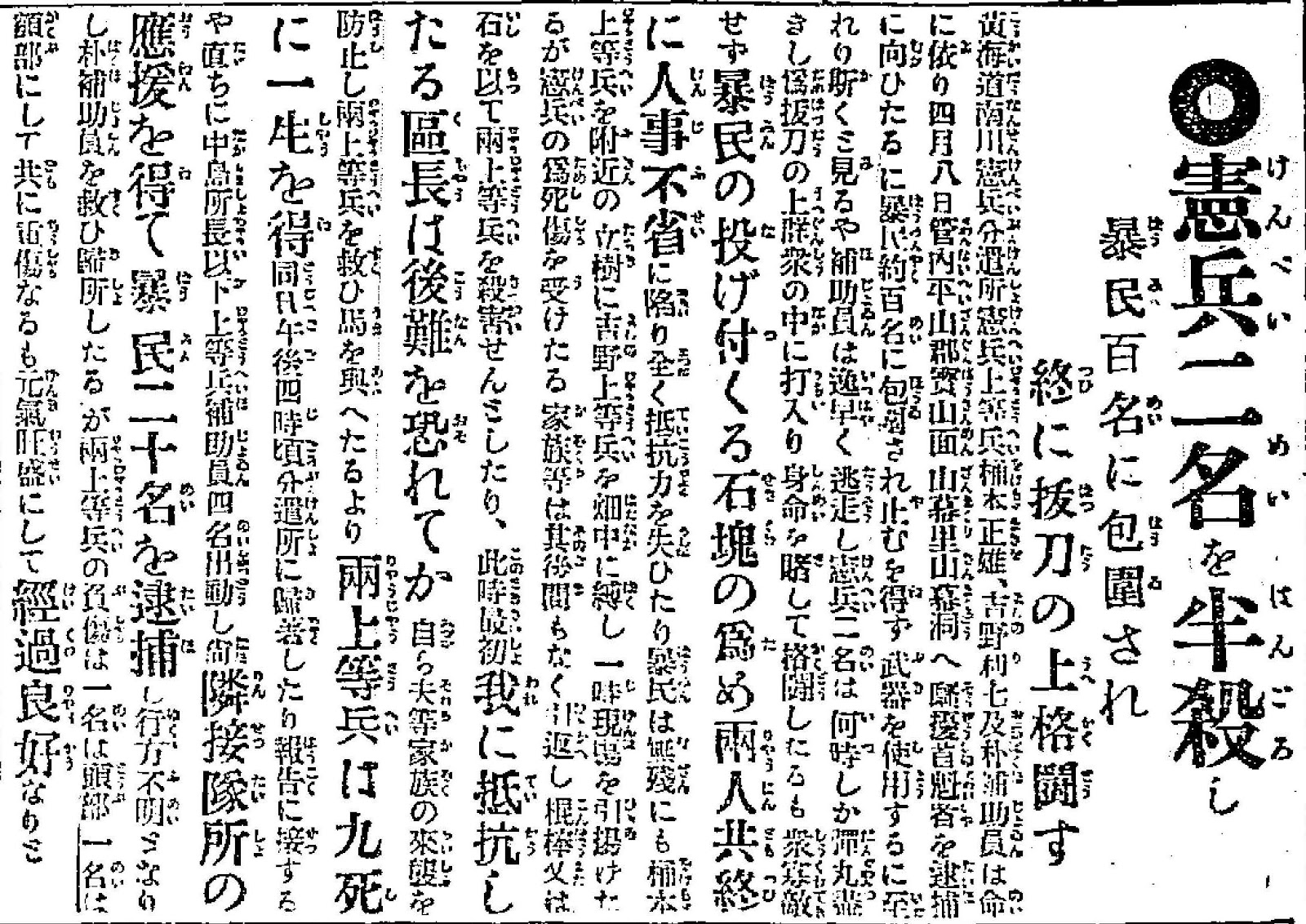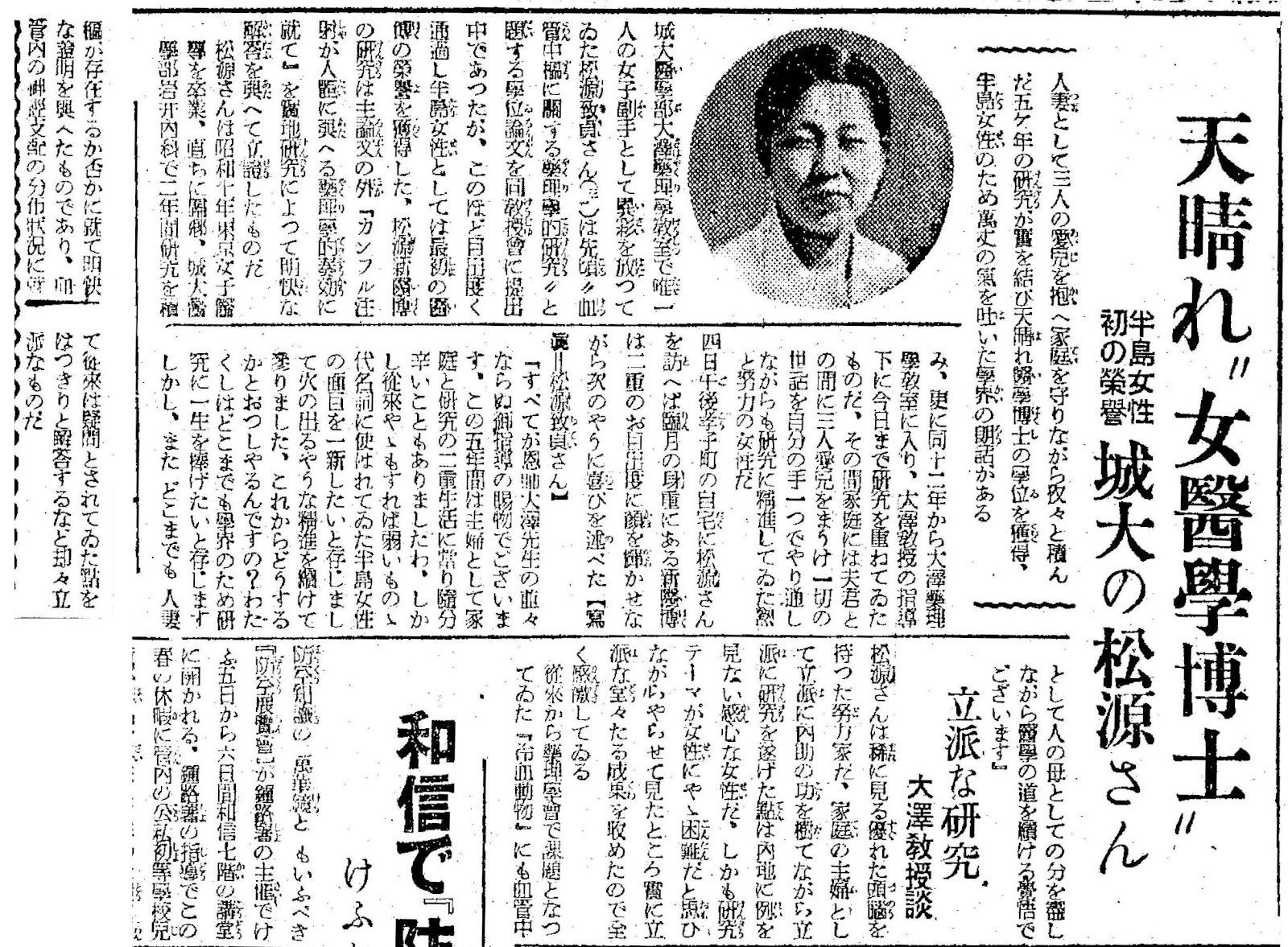
Converted Korean ‘ideological criminals’ (a.k.a. independence activists) at ‘Yamato Cram School’ tearfully apologize for fighting against Imperial Japan and are spellbound as Governor Koiso explains in propaganda speech that the greatest significance of life is hidden in Japanese mythology (1943)
This is my translation and transcription of a news article from Keijo Nippo, a propaganda newspaper and mouthpiece of the government of Japan-colonized Korea. This has never been republished or translated before, to the best of my knowledge.
This article covers Governor Koiso‘s inspection visit to Yamato Cram School (대화숙/大和塾), or a brainwashing center to ‘convert’ Korean ‘ideological criminals’ (a.k.a. anti-colonial nationalists or independence activists) into Imperial collaborators. The topic of Korean thought crimes and converts (tenkōsha) is relatively well-researched in academia. Thought Crime: Ideology and State Power in Interwar Japan by Max M. Ward is a good book on this topic, and chapter 5 is available online as a free PDF.
There is also an excellent paper written by Hong Jongwook of Seoul National University entitled “The Thought Control Policy and the Yamato-juku in Colonial Korea“, but unfortunately this paper is only available in Japanese.
Japan-colonized Korea could be described as a dictatorship of the Governor-General, who was appointed by the central government in Tokyo, under one party rule by the late 1930’s. Within very broad constraints, they had almost unlimited power in Korea to do whatever they wanted. Governor Koiso tended to be more narcissistic than most of his predecessors, and he loved to splash the newspapers with his propaganda speeches and writings, and also articles, including this one, covering his inspection visits and work activities. He is notable for putting young Korean girls into internment camps to turn into ‘true Japanese’ mothers, with the idea that this would have a multiplier effect as these Korean girls become mothers who raise Japanese children. But immediate wartime needs apparently turned this project into a more practical wartime work force program.
The sign on the left says “内鮮一體” or ‘Japanese-Korean Unification’, and the sign on the right says “京城大和塾” or “Gyeongseong Yamato Cram School”, with Gyeongseong being the old name for Seoul.
(Translation)
Gyeongseong Ilbo (Keijo Nippo) September 17, 1943
Live by the Mythology
The Governor-General Visits Yamato Cram School and Delivers a Prolonged Address
At 2:30 p.m. on the afternoon of the 16th, Governor-General Koiso, accompanied by his secretary, Mr. Kobayashi, suddenly appeared at Yamato Cram School in Takezoe-chō (present-day Chungjeong-ro), Seodaemun-gu, Seoul, and walked into the reception room to the amazement of everyone. Upon hearing the news of Governor-General Koiso’s visit, Probation Office Director Mr. Nagasaki hastily returned to the school and was asked by the Governor about the general situation at Yamato Cram School. He was particularly interested in the current state of thought of the converts, and when the director described the indignation felt by the converts toward the unconditional surrender of the Italian government under Badoglio and the converts’ pledge of loyalty to Imperial Japan, the Governor General’s tense expression showed a nod of agreement. Then, Director Nagasaki led them to a classroom where the converts had gathered non-Japanese speakers in the neighborhood from the unemployment job center to teach them Japanese, and then they went to the auditorium. After seeing the art club and returning to the reception room, the Governor- General responded to the students’ requests and began to explain the profundity of Japanese studies, which are connected to mythology, by stating that ‘learning is what it is because of the state’.
He began his speech by saying,
“Man must contemplate things from various angles in order to spend his life in a meaningful way, or he will turn to science, philosophy, and religion to answer the cries of his soul. However, even though we live in a world where science is universal, we still feel that we are lacking something profound if we are confined to science alone. Even modern philosophy and religion, which delve deep into the spirit, are not enough as long as they remain within those limits. The place to go is history and tradition. But even here, the cry of the soul cannot be fully satisfied. The last place to go is mythology. It is easy for people to think that the significance of mythology is nothing, but they are mistaken.
It is in this mythology that the greatest and ultimate significance of life is hidden. When I was a division commander in Hiroshima, I once visited the Yamaguchi Boys’ Prison. There, I saw a military drill review and was very impressed by the performance that was so magnificent that the specialist soldiers blushed, and I gathered the prisoners together and gave them a lesson. The words in each sentence that I spoke contained a tone of excitement, but there was someone who listened to everything I said with tears in his eyes, and I read his book. However, in order for a person to live, there must be a center. If we analogize this to the shape of a cone, when we look at it from the bottom with the apex at the top, the visible bottom is reality, and the invisible apex is mythology. The vertical line descending from the apex is the so-called center. No matter how many times you cut the sloping surface from the side, you will always reach the center. This center is noble and leads to the path of living the mythology. You are this center. When you live by the mythology, you can live with firm conviction, unmoved by anything”.
As the Governor-General spoke for about 20 minutes, the room was filled with deep emotion.
Mr. Moto Koyama, reflecting the deep emotion of the audience, spoke with tears in his eyes: ‘In the past, we were sinners who drew our bows against Imperial Japan. Today, we have awakened to this fact, and we are firmly determined to compensate Imperial Japan using the arms and heads that we used to lay down our bows’. The Governor-General replied with a quiet, warm facial expression, ‘Make sure you do it right’, and tried to leave. The group apologetically asked, ‘May we take a picture with you?’ The Governor-General readily agreed, and the group took a picture in a friendly yet solemn atmosphere, and the Governor-General returned to his residence after 4:00 p.m. as the group looked on. (Photo: Governor Koiso leaving the school after being seen off by everyone.)
Source: https://www.archive.org/details/kjnp-1943-09-17
(End of Translation)
(Transcription)
1943年9月17年 京城日報
須らく神話に生きよ
総督・大和塾を訪れ諄々説く
十六日午後二時半小磯総督は小林秘書官を帯同京城西大門区竹添町大和塾にひょっこり姿を現し一同面喰う中を応接間に歩を運ぶ。小磯総督来塾の報に外出先から急遽帰塾した長崎保護観察所長から大和塾の全般的状況を具さに聴取。転向者の今日の思想状況には特に関心を持ち、所長が此度の伊バトリオ政権の無条件降状に対する転向者の憤振りと皇国に燃やす尽忠の誓いを述ぶれば総督の引き緊まった表情にもうなずきの色が見え、次いで長崎所長の案内により授産場から国語普及に転向者達が附近の国語未解者を集めて教育している教室に入り、講堂に巡って応用。美術部を見て応接室に帰った総督は塾生の切望に応じ、”学問は国家あっての学問である”と冒頭して神話に結ぶ日本学の深遠性を諄々と説き来り説き去るのだった。
『人間は自分の一生を有意義に過ごすために種々なる角度から熟考しなければならない。或いはその魂の叫びに科学、哲学、宗教に深索の歩みを入れるであろう。然し科学万能の世であるとは謂え、科学のみに立て籠もっては何かと深奥に物足りないものを覚えるのである。最も精神を掘り下げる現代哲学、宗教にあってもこの限界に止まる限り矢張り物足らない。そこから進み入るところは歴史であり、伝統である。然し此処でも十分に魂の叫びを満たしては呉れない。最後に行きつくところのものは神話なのである。神話の持つ意義をなんでもないように一般に思われ易いが、それは大間違いである。
この神話にこそ人生の最大なる究極の意義が秘められている。自分が広島の師団長をしていた時、山口少年刑務所に行ったことがある。そこで軍事教練閲兵等を見たが、専門の兵隊が赤面する程堂々たるもので自分は心から感激し、囚人を集めて訓辞したことがある。自分の言葉の一句一句にも自然感激の語調が含まれていたが、全部泣いて聴いていた或る人の書物を読んだ。ところが人が生きる上には何か中心がなければならない。これを円錐形に譬えれば頂点を上にして下から眺めた時、底面の見える處が現実で、見えない頂点が神話である。頂点から降した垂線が所謂この中心である。横の斜面をどんなに切って行っても中心に達する。この中心が尊いし神話に生きる道に通ずるものである。皆さんはこの中心である。神話に生きる時、何ものにも動じない固い信念に生き得るのである。』と約二十分間に亘って説けば室内は深い感激が森厳にこもる。
この一同感激を代表して小山元君が”過去に於いて私達は皇国に弓をひいた罪人であります。今日それに目醒めた私達は弓おいたこの腕と頭をもって皇国に報いることを堅く決意いたします”と声涙をもって真情を述ぶれば、総督も静かな温顔で”しっかりやってくれ”といい残して去らんとする。一同は名残り惜しげに”写真を一緒に撮らせて戴きませんか”と願い出れば総督も気易く引き受けて並び和やかな中にも厳粛な空気の中に写真に納まって同四時過ぎ一同の見送る中を官邸に引き上げた。【写真=一同の見送りをうけて塾を出る小磯総督】
